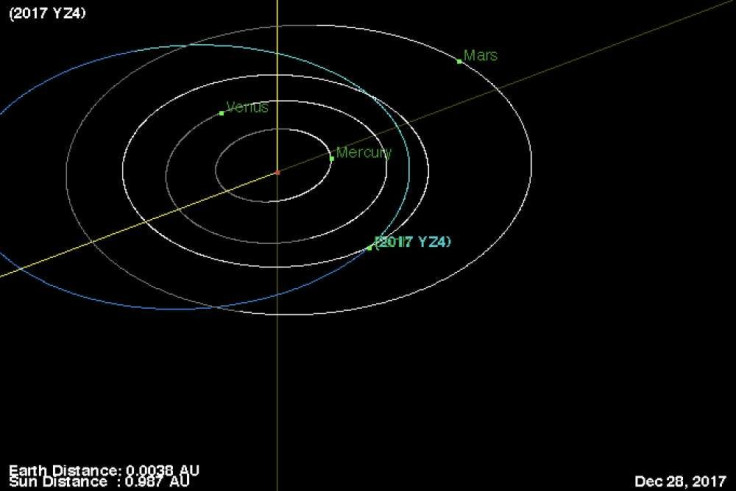Asteroid Which Came Close To Earth Was Noticed Only 3 Days Earlier

Even though NASA has set up a Planetary Defense Coordination Office (PDCO), with the stated objective of “ensuring the early detection of potentially hazardous objects” — which include asteroids and comets — spotting these objects well ahead of time as they hurtle toward Earth isn’t always easy or even possible, given the sheer vastness of the sky.
One such object that remained undetected till three days before its closest approach to the planet was an asteroid called 2017 YZ4. On Thursday morning, it passed at about 58 percent of the distance that separates Earth from the moon. That is roughly 224,000 kilometers (about 138,500 miles), well within the PDCO ambit of spotting such objects when they come closer than 0.05 AU (an astronomical unit is about 150 million kilometers, the distance between Earth and the sun), or about 7.5 million kilometers.
2017 YZ4, classified as a near-Earth object (NEO), was first spotted on Christmas by the Mount Lemmon Survey (based in the University of Arizona). Given the trajectory of its orbit, it was classified as an Apollo NEO, which refers to objects whose orbits cross that of Earth but take them closer to the sun than the Earth-sun distance.

NASA was tracking 2017 YZ4 ever since it was discovered, but it is not possible to know how much danger it actually posed. For one, the asteroid is estimated to be between seven and 15 meters across, while the PDCO concerns itself with larger objects, greater than about 30 meters or so. Only objects that are larger are considered big enough to survive the journey through Earth’s atmosphere and reach the planet’s surface.
For instance, the Chelyabinsk meteor that exploded over central Russia in 2013 was about 20 meters across, and never made it to the ground. Actually, after it exploded, its smaller fragments reached the surface, but the impact from those was a lot less severe than if the entire meteor had hit. The damage from the shockwave generated by the explosion was far greater.
Much of the energy from such explosions comes from the sheer speed these objects from space are traveling at. 2017 YZ4, for instance, is moving at 9.5 kilometers a second (about 6 miles a second). And it is only one of the almost 17,400 asteroids that are classified as NEO. Other than the asteroids, there are another 100 or so NEOs that NASA is aware of.
© Copyright IBTimes 2025. All rights reserved.





















